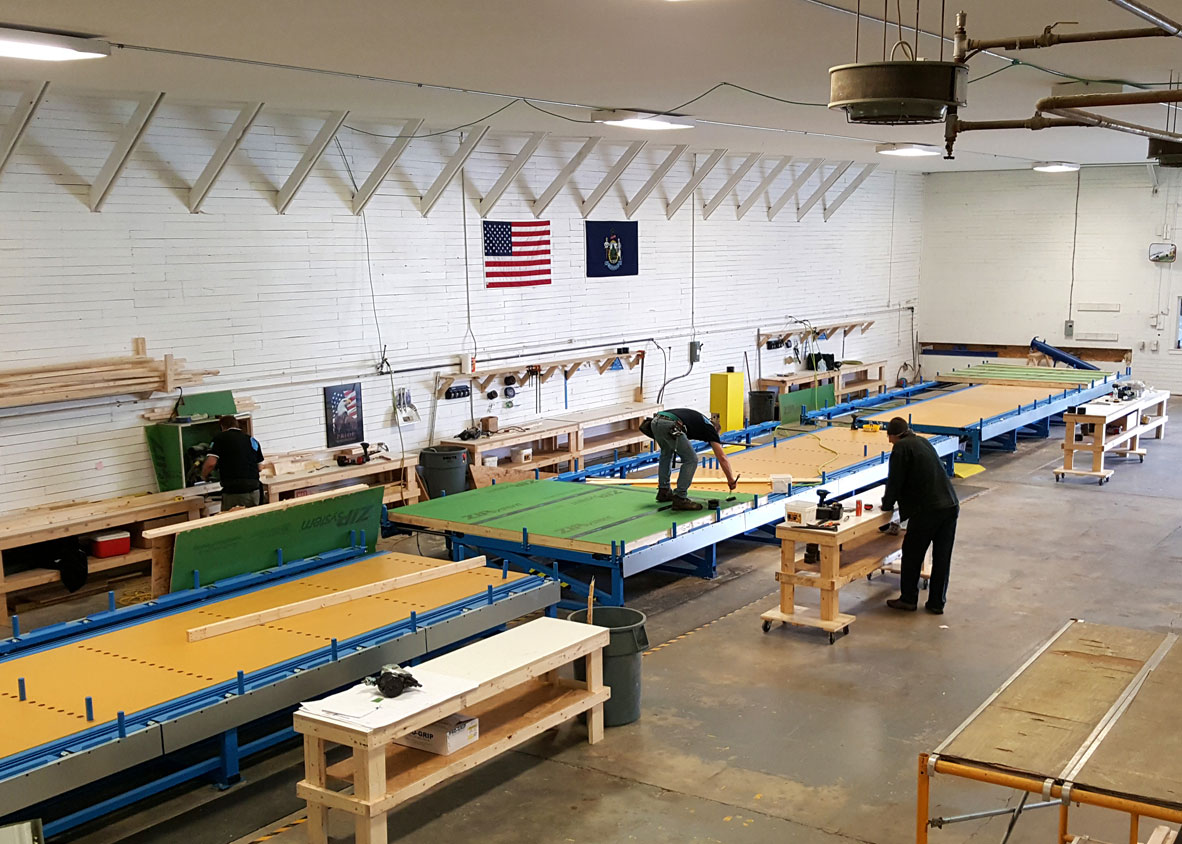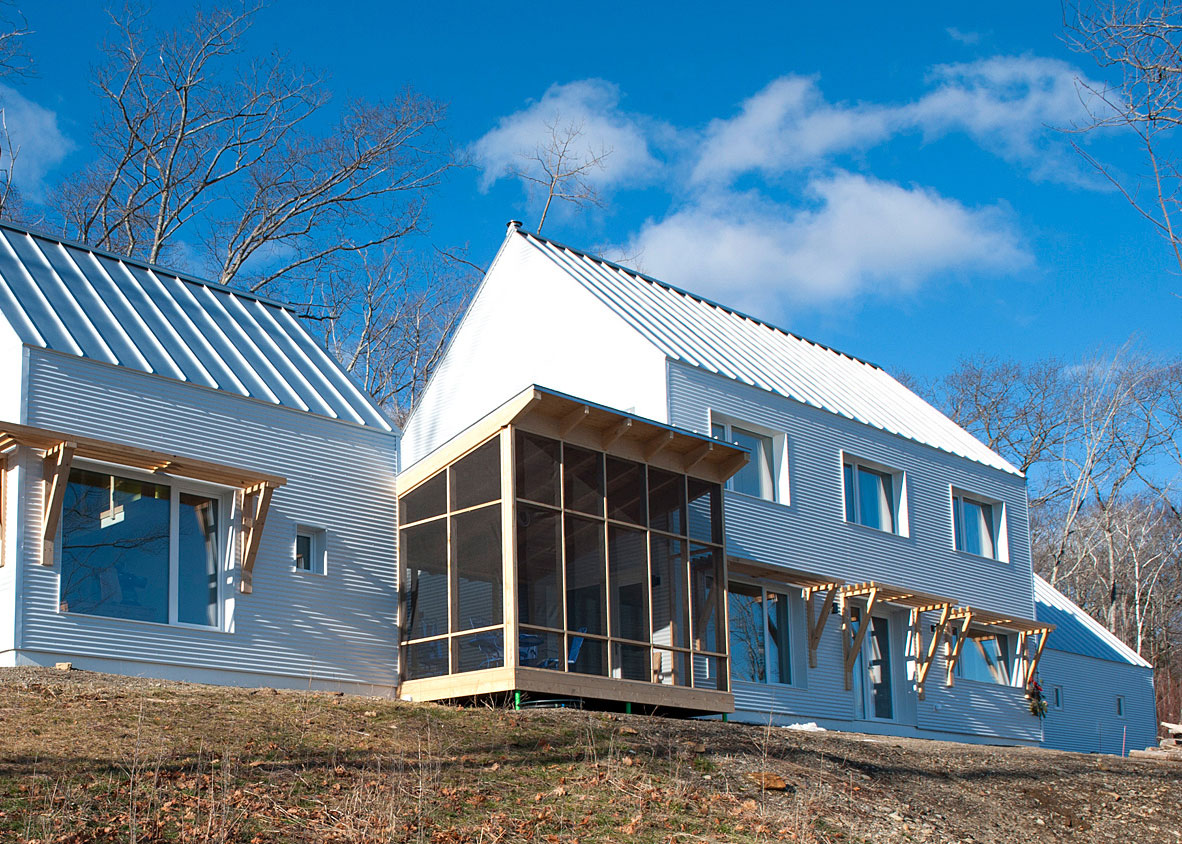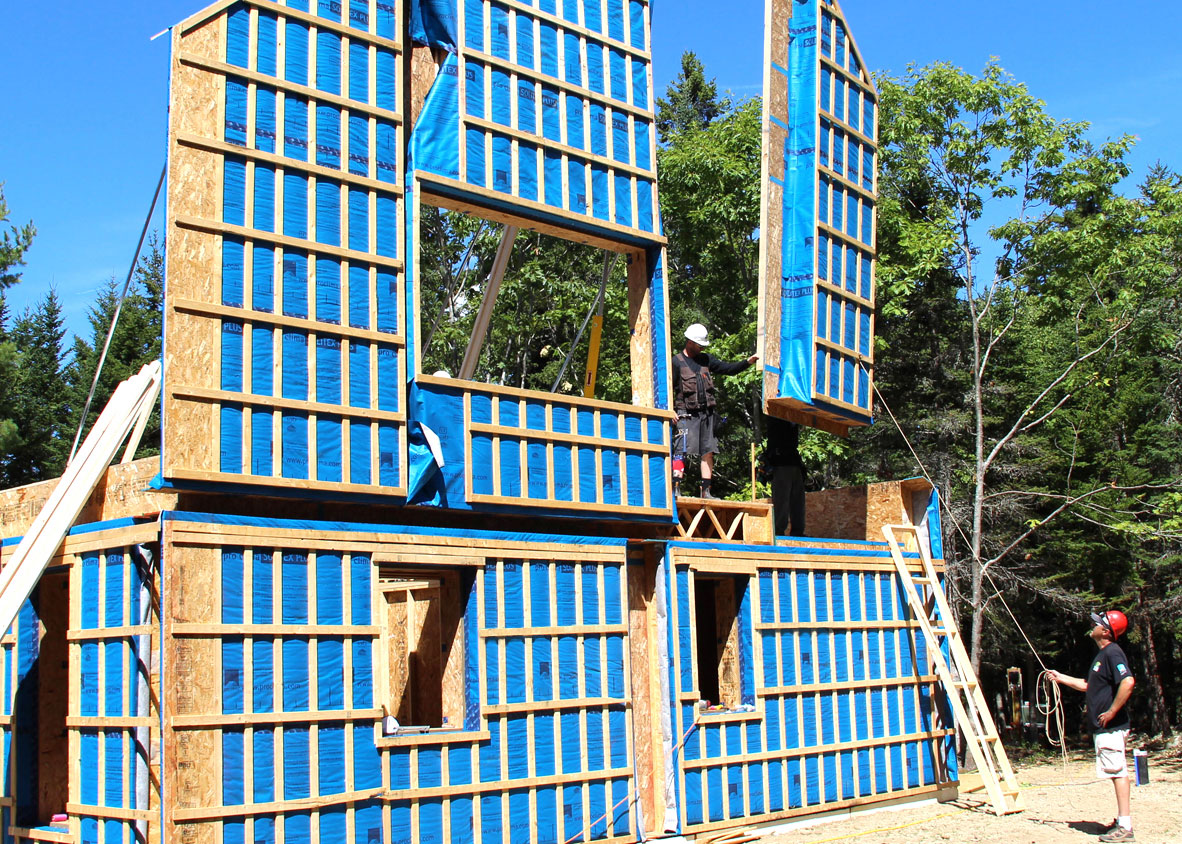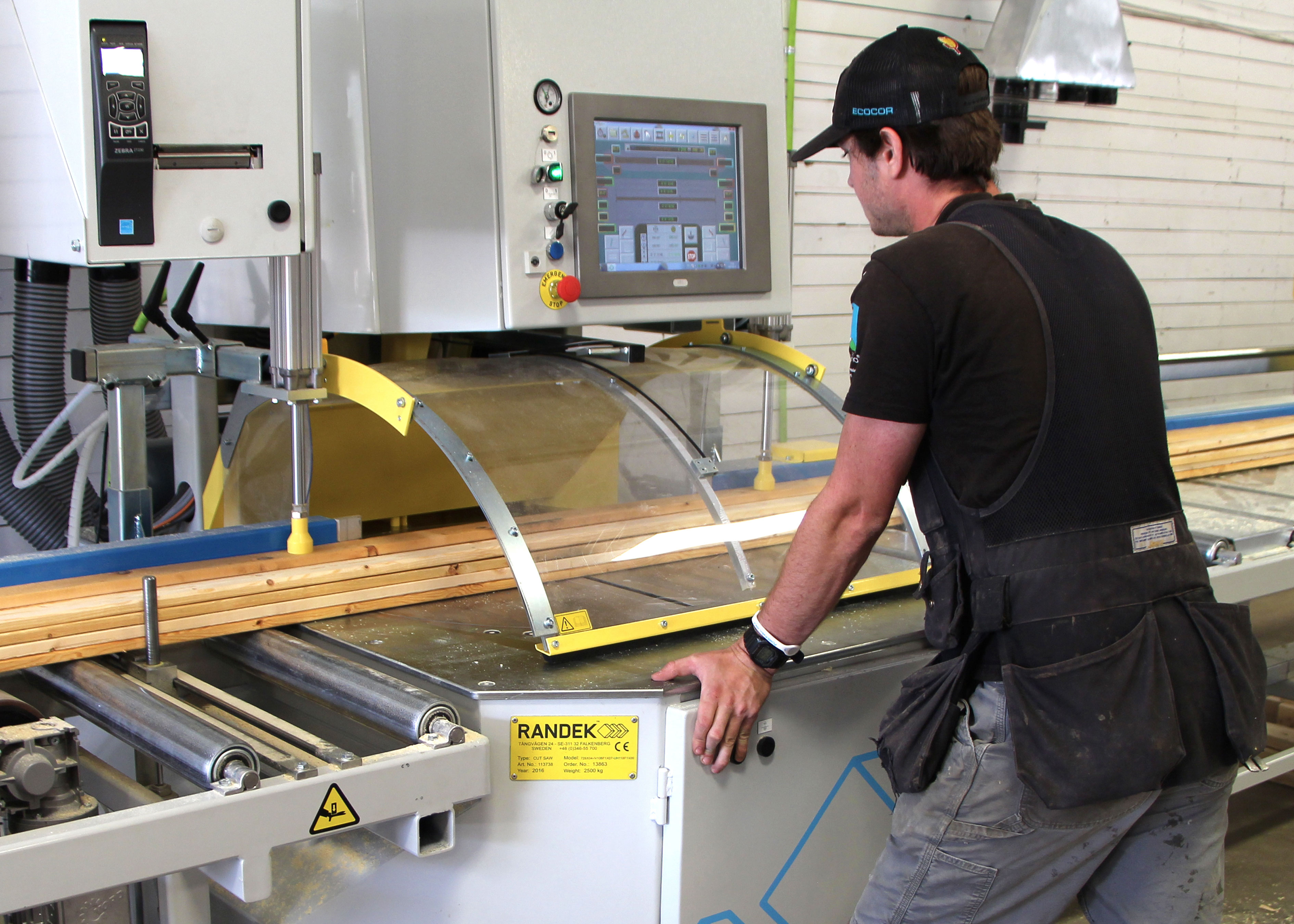
Ecocor manufactures pre-fabricated, high-performance passive homes in a highly controlled environment.
[Courtesy of Ecocor]
The average cost per square foot of a SOLSKEN model home is $237.
For architect Richard Pedranti, AIA, CPHC, CPHB, HERS, PHIUS +, LEED, the fact that green building hasn’t yet become the standard in new construction points to a problem inherent in the building construction industry itself.
A nearly 30-year veteran of the building industry, Pedranti led a team that worked on the $2.5 billion Tokyo International Forum building and has worked with respected residential architects in some of the finest neighborhoods in New York. So he isn’t afraid to point out the industry’s shortcomings. “We’re still building homes the way we did in the 1930s,” he says. “And that’s a result of our building code. I like to say our code represents the worst house you are legally allowed to build. Because we don’t measure performance, or indoor air quality, or comfort, or the amount of natural resources and energy we use to build and live there.”

[Courtesy of Ecocor]
Pedranti’s firm, Richard Pedranti Architect (RPA), lies in the heart of the Upper Delaware Region and offers environmentally conscious building strategies. They have extensive experience creating beautiful buildings in the Passive House standard.
Hundreds of miles away, in sleepy Searsmont, Maine, owner and technical director of construction firm Ecocor, Christian Corson, struggled with the same frustrations that Pedranti did. He has been a leader in the United States Passive House movement for more than six years, founding Ecocor in 2010. “There is almost no other sector of human civilization where we have been doing things virtually the same way for half a century,” Corson says.
It makes no sense to ask our clients to raise their families and children in a home built out of toxic materials. At the same time, not using these materials means the people working for us, on the floor of the factory day-to-day, they stay healthy, too.
Ecocor has focused on the design, manufacture, delivery, and assembly of high-performance Passive House buildings, reducing energy consumption for heating and cooling by 80 to 90%, cutting construction waste, and shortening time-to-occupancy since its inception. Although they didn’t begin their prefabrication process until 2013, in just three years they’ve built more than 35 passive homes. And they’re looking to scale up to 50 or 60 passive homes a year, Corson says. Key to that goal will be a new partnership and a new line of model homes.
The partnership, grown out of a longtime friendship, seemed a natural extension of Pedranti and Corson’s mutual desire to affect real change in the green building industry and the building construction industry as a whole.

[Courtesy of Ecocor]
The two met at industry conferences and their passion for the same ideals shown through. “It was a natural progression, evolving from a personal friendship to a strategic business partnership, where I would do the design and engineering and Chris would do the construction,” Pedranti says.
For them, it all comes down to where and how we choose to live. “It makes no sense to ask our clients to raise their families and children in a home built out of toxic materials. At the same time, not using these materials means the people working for us, on the floor of the factory day-to-day, they stay healthy, too,” Corson says.
So in June 2016, the two companies announced a partnership to design and build the most energy-efficient prefabricated homes in North America—built to Passive House standards, with solar-optimized orientation and high performance windows, using the same sort of sustainable, healthy materials clients had come to expect from both companies. A typical RPA/Ecocor home, called the SOLSKEN line, will contain FSC-certified lumber, zero-VOC insulations, and chemical sealers, with materials manufactured short distances away, reducing embodied energy.

[Courtesy of Ecocor]
In the Ecocor factory, panelized walls, floors, and other components are fabricated with the latest technology in a highly controlled environment, and much of the construction waste is reused in other projects. That means reduced waste and reduced time-to-completion, all cost savings that can be transferred to the customer, making these types
of homes even more accessible.
“We really are trying to take a big-picture look at what it is we’re doing, why and how we’re doing it, and how we can apply the most sustainable and benevolent methodologies—both internally and externally,” Corson says. “We are in 2017. Everyone should have this. Every family deserves this.”
